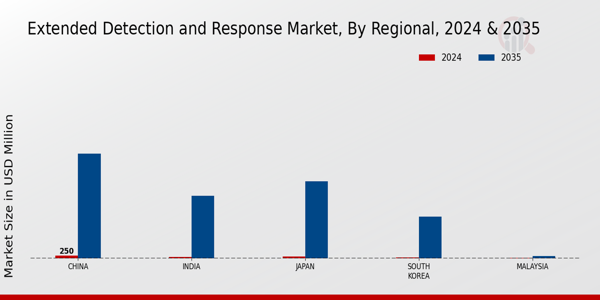The APAC Extended Detection and Response (XDR) Market has been witnessing significant growth due to rising cyber threats and the increasing complexity of IT environments. In this competitive landscape, numerous vendors are focusing on integrating multiple security solutions to provide holistic defense mechanisms against sophisticated cyberattacks.
The XDR market in the APAC region is characterized by a growing demand for automated response capabilities, advanced threat detection, and comprehensive visibility across diverse IT infrastructures.
Companies are increasingly investing in research and development to enhance their product offerings, collaborating with various stakeholders, and expanding their market reach to gain traction in this lucrative segment.
Competitive insights reveal a landscape filled with innovation, a need for agility in addressing dynamic security challenges, and an emphasis on building strategic partnerships to leverage technological advancements.
Sophos has established a prominent presence in the APAC Extended Detection and Response Market with its intuitive security solutions focused on simplifying the approach to cybersecurity. The company is recognized for its powerful cloud-based endpoint and network security offerings, which seamlessly integrate to provide comprehensive threat detection and response capabilities.
Sophos's strengths lie in its continuous innovations, user-friendly interface, and advanced machine learning algorithms that empower organizations to respond to threats quickly and effectively.
With a robust partner ecosystem and localized support, Sophos has positioned itself as a trusted player in the APAC region, catering to the specific needs of businesses aiming to enhance their cybersecurity posture against evolving threats.
Cisco, a long-standing leader in network and security solutions, is also a significant contender in the APAC Extended Detection and Response Market. The company offers a diverse range of products and services, including the Cisco SecureX platform, which integrates various security tools to provide unified visibility and response capabilities.
Cisco's strengths lie in its advanced analytics, threat intelligence, and extensive network infrastructure expertise, allowing businesses to adopt a proactive stance against cyber threats. The company has been active in enhancing its market presence through strategic mergers and acquisitions, expanding its portfolio to include cutting-edge security solutions tailored for the APAC market.
Cisco's commitment to innovation and collaboration, alongside its established reputation, positions it as a formidable player in addressing the cybersecurity challenges faced by organizations in the region.





















Leave a Comment